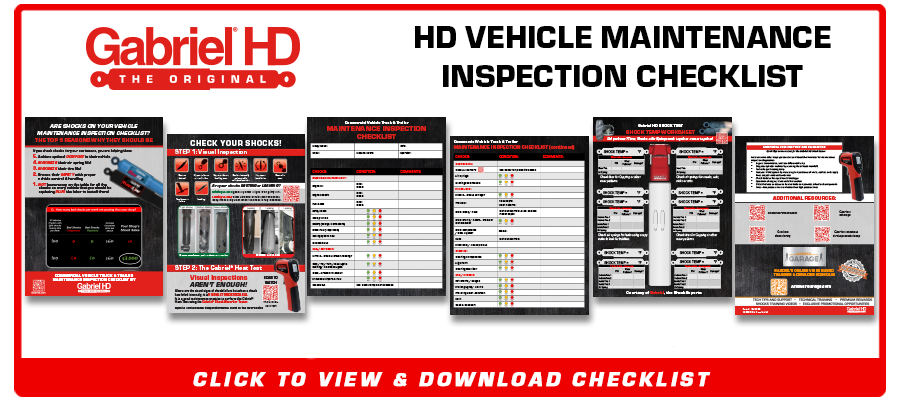HOW TO
CHECK YOUR SHOCKS
GABRIEL’S MAINTENANCE INSPECTION CHECKLIST
Gabriel has put together a FREE and easy-to-use maintenance inspection checklist to help you and your shop test for worn shocks along with many other components, and more importantly help grow your shop's sales!
VIDEOS
This video shows you how to perform the Gabriel Heat Test to definitively tell if your commercial vehicle shocks are worn and need replacing
This video walks you through all the different ways that shock absorbers can become worn out over time and when it is time to replace them
This video explores the differences between misting shocks and leaking shocks and when they should be replaced
When a shock has failed internally, it is visually undetectable! Shocks generate heat when working so the shock body should be warm to hot after normal use. By comparing the temperature of the shocks and the frame rail, you can get an idea of the working condition of the shock.
The Gabriel Shock Absorber Tester will enable you to easily check & identify shocks that are worn past their useful life.
THE GABRIEL® HEAT TEST
The Gabriel Shock Absorber Tester is essential for performing the
GABRIEL HEAT TEST. It can be purchased in the Gabriel swag store or
as a FREE REWARD when participating in shock absorber training on
AnswerGarage.com!
1. Drive the vehicle for at least 15 minutes.
2. Within five minutes after stopping the vehicle, establish a reference temperature of the vehicle chassis frame using an infrared thermometer gun. Next, check the temperature of the shock absorber body below the dust tube (about 1” from the bottom cap).
WARNING: DO NOT touch the shock as it may be hot and could cause a burn injury – an infrared thermometer gun or similar measuring device is recommended.
3. All shock absorbers should be warmer than the chassis. Suspect a failure in any shock absorber that is noticeably cooler than its mate on the other end of the axle.
Remember this simple saying: If it’s COLD, it’s OLD!
LITERATURE / POP











